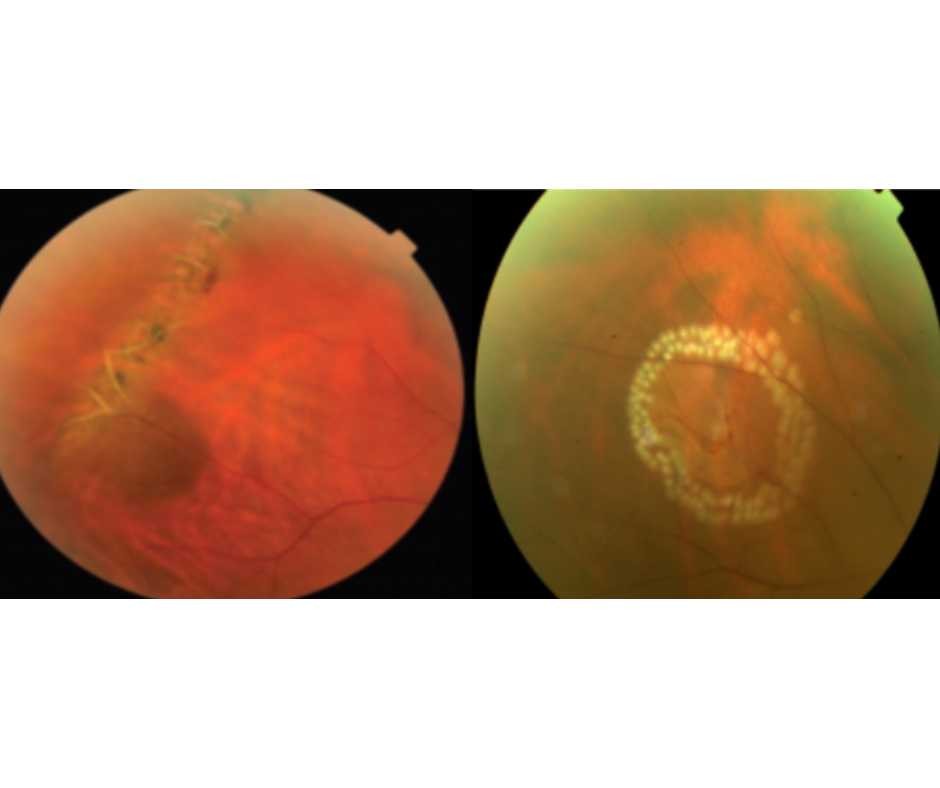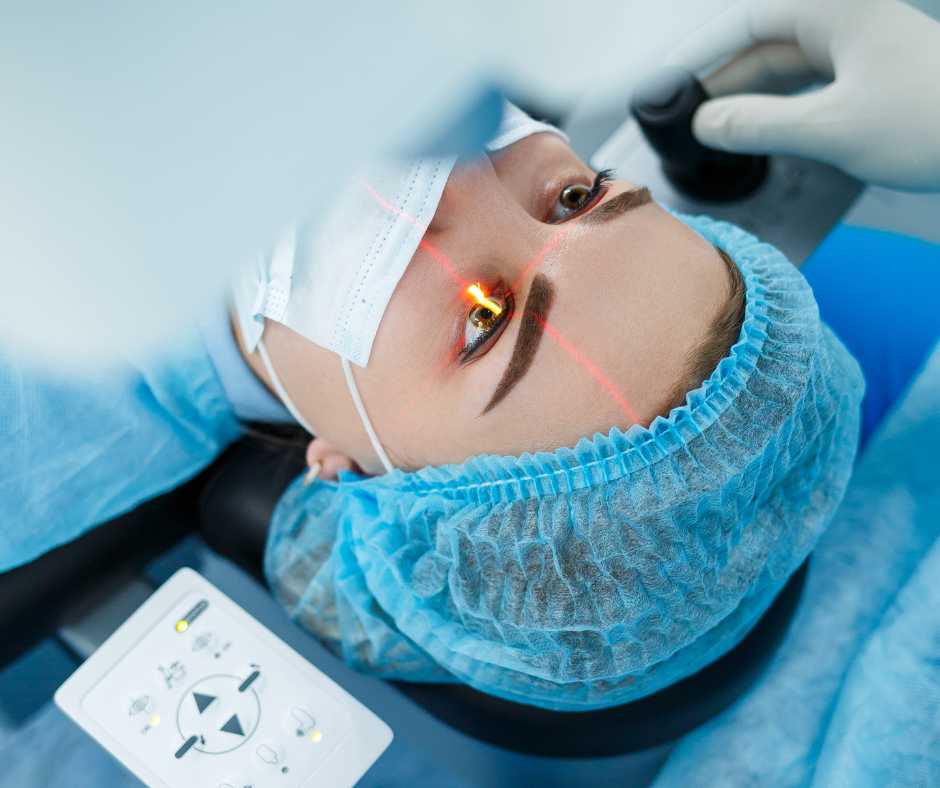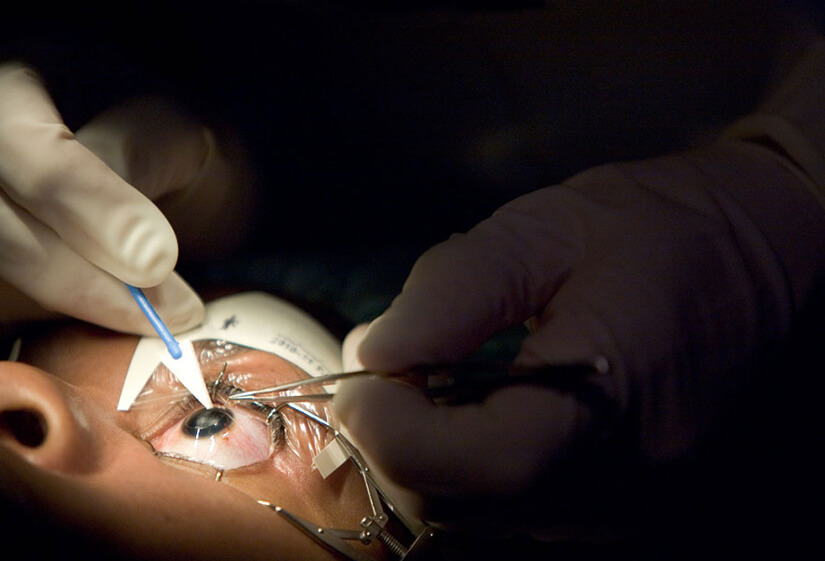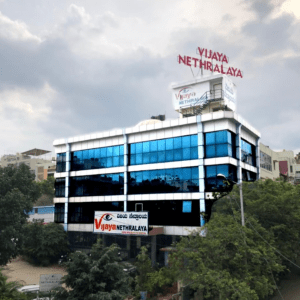KERATOCONUS LATEST TREATMENT:
KERATOCONUS LATEST TREATMENT, a progressive eye disorder affecting the cornea, can significantly impair vision and quality of life. Additionally, the ongoing progress in medical technology and treatment approaches has brought newfound hope for individuals grappling with this condition.
Cutting-Edge Treatments for Keratoconus:
Corneal Cross-Linking (CXL)
Corneal cross-linking is a minimally invasive procedure that strengthens the cornea to prevent further bulging. It involves applying riboflavin (vitamin B2) eye drops to the cornea and then exposing it to ultraviolet (UV) light.Additionally, this combination helps form new collagen cross-links within the cornea, increasing its rigidity.
- Benefits: Slows or halts the progression of keratoconus, reduces the need for corneal transplants, and can improve vision stability.
- Risks: Temporary discomfort, haziness, or sensitivity to light post-procedure.
2. Customized Contact Lenses
Specialized contact lenses can provide significant visual improvement for keratoconus patients. These include:
- Scleral Lenses: Large-diameter lenses that vault over the cornea, providing a smooth optical surface and resting on the sclera (white part of the eye).
- Hybrid Lenses: Combine a rigid gas-permeable center with a soft outer ring for comfort and improved vision.
- Piggyback Lenses: A combination of a soft contact lens underneath a rigid gas-permeable lens for enhanced comfort and visual correction.
- Benefits: Improved visual acuity, enhanced comfort, and custom fitting for individual corneal shapes.
- Risks: Potential for lens intolerance or infection if not properly cared for KERATOCONUS LATEST TREATMENT
3. Intracorneal Ring Segments (ICRS)
Intracorneal ring segments are tiny, arc-shaped devices implanted into the cornea to flatten its shape and improve vision. Additionally, they are often used to treat conditions such as keratoconus and other forms of corneal ectasia.
. This surgical procedure is typically considered when contact lenses are no longer effective.
- Benefits: Improved corneal shape, better visual acuity, and a reversible procedure.
- Risks: Infection, glare, or halos around lights.

4. Topography-Guided Photorefractive Keratectomy (PRK)
This laser eye surgery reshapes the cornea’s surface based on detailed topographic maps, offering personalized treatment. Topography-guided PRK can be combined with corneal cross-linking for enhanced results.
- Benefits: Customized treatment, improved visual outcomes, and potential for combined treatment with CXL.
- Risks: Post-surgery discomfort, longer recovery time compared to other laser surgeries.
5. Corneal Transplants
In advanced cases of keratoconus where other treatments are ineffective, corneal transplants (keratoplasty) may be necessary. There are two main types:
- Penetrating Keratoplasty (PK): Full-thickness corneal transplant.
- Deep Anterior Lamellar Keratoplasty (DALK): Partial-thickness transplant, preserving the innermost corneal layers.
- Benefits: Restores vision in severe cases, long-term solution.
- Risks: Risk of rejection, prolonged recovery, and need for immunosuppressive medications.
Author Details:
Dr. Sushruth Appajigowda holds a prominent position as a Cornea, Cataract, Glaucoma, and LASIK Surgeon in Bangalore. He serves as the chief Cataract and Refractive surgeon at Vijaya Nethralaya Eye Hospital, Nagarbhavi Bangalore. Renowned as one of the finest LASIK surgeons nationwide, he brings with him over 12+ years of experience across multiple LASIK platforms, including ZEISS, ALCON, SCHWIND, AMO, and Bausch and Lomb. Having successfully conducted over 5000 LASIK procedures, Dr. Sushruth holds the title of a Certified Refractive Surgeon and a Fellow of the All India Collegium Of Ophthalmology. Furthermore, he stands as a distinguished speaker at various National and International Forums, using his expertise to guide you in selecting the most suitable procedure based on your health requirements.

http://vijayanethralaya.com/link-in-bio/
Conclusion:
The latest treatments for keratoconus offer promising solutions for managing and improving vision for those affected by this condition. Moreover, these advancements are making a significant impact on the quality of life for patients. From corneal cross-linking to customized contact lenses and advanced surgical options, patients have more choices than ever before. early diagnosis and intervention remain key to maximizing treatment effectiveness and preserving vision. Consequently, prompt action can significantly enhance outcomes and safeguard visual health.











